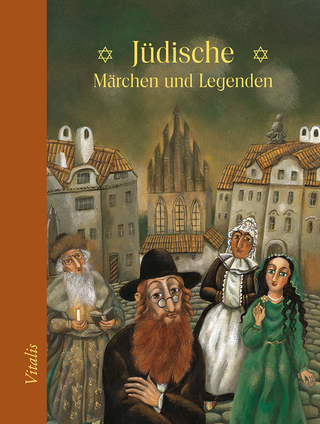
Israel Celebrates
Brill (Verlag)
978-90-04-34386-3 (ISBN)
Israel Celebrates is about the intersection where Israeli inventiveness and Jewish tradition meet: the holidays. It employs the anthropological history of four Jewish holidays as celebrated in Israel in order to track the naturalization of Jewish rituals, myths, and symbols in Israeli culture throughout “the long twentieth century” of Zionism and on to the present, and to demonstrate how a new strand of Judaism developed in Israel from the grassroots. But could this grassroots Israeli culture develop into a shared symbolic space for both Jews and Arabs? By probing the political implications of the minutiae of life, the book argues that this popular culture might come to define Jewish identity in Israel of the 21st century.
Hizky Shoham is a senior lecturer at the Interdisciplinary Program for Hermeneutics and Cultural Studies at Bar-Ilan University, Israel and a research fellow at the Shalom Hartman Institute in Jerusalem. A cultural historian of Zionism, he published Carnival in Tel Aviv: Purim and the Celebration of Urban Zionism (Academic Studies Press, 2014).
Acknowledgements
Introduction – Israeli Civic Culture as a Jewish Culture
Civic Culture
Israeli Culture, Jewish Culture(s)
The Anthropological History of Israeli Holidays
Structure of the Book
Chapter One – Jewish Family: Passover
Passover in Jewish Cultures of the Past
The Seder in the Yishuv and in Israel
The 1960s on: The Rise of the Extended Family
“What do I have in common with these people?”
Why the Haggadah?
The Seder in the Jewish Culture of the Diaspora
Conclusion: The Jewish Extended Family in Israeli Public Culture
Chapter Two – Environment: Tu Bishvat
Tu Bishvat in Jewish Cultures of the Past
Arbor Day and Tu Bishvat
Trees and Planting in the New Hebrew Culture
The Mandate Era: National Planting Ceremonies
Planting Ceremonies in Independent Israel: Ecology and Politics
Tu Bishvat in Israeli Culture: The Environmental-Political Track
Tu Bishvat in Israeli Culture: The Environmental-Apolitical Track
Tu Bishvat in Adult Culture: Active Nostalgia
Tu Bishvat in American Jewish Culture
Tu Bishvat and Arbor Day: Reciprocal Relations
Conclusion: Nostalgia as a Cultural Force
Chapter Three – Public Space: Yom Kippur
Yom Kippur as an Anomaly
Historical Yom Kippur
The Israeli version of Yom Kippur: The Suspension of Transportation
The Suspension of Economic Activity
“Online Fasting”: What do People Do?
Heshbon Nefesh: Ecology and Politics
The Jewishness of Public Space
Conclusion: The Jewish Public Space
Chapter Four – Freedom: Yom Ha’atzma’ut
Yom Ha’atzma’ut: The Initial Second Thoughts
Spontaneity and Artificiality
Doing Something on Yom Ha’atzma’ut
Wandering the City Streets
From Picnic to Cookout
Memorial Day and the Torch-Lighting Ceremony
Yom Ha’atzma’ut in the Diaspora
Israeli Arabs and Yom Ha’atzma’ut
Conclusion: An Empty Day?
Chapter Five – Citizenship: The “Nationalization” of Jewish Culture in Israel
The Assimilative Power of the Jewish Culture in Israel
The Nationalizing of the Israeli Jewish Culture
Nationalizing the Jewish Culture: Its Ramifications for Jewish Identity in Israel
Nationalizing the Jewish Culture: Its Ramifications for Arab Identity in Israel
Epilogue: Political Fantasy and Cultural Reality
References
| Erscheinungsdatum | 05.05.2017 |
|---|---|
| Reihe/Serie | Jewish Identities in a Changing World ; 28 |
| Verlagsort | Leiden |
| Sprache | englisch |
| Maße | 155 x 235 mm |
| Gewicht | 586 g |
| Themenwelt | Geisteswissenschaften ► Religion / Theologie ► Judentum |
| Sozialwissenschaften ► Ethnologie ► Volkskunde | |
| Sozialwissenschaften ► Soziologie ► Spezielle Soziologien | |
| ISBN-10 | 90-04-34386-5 / 9004343865 |
| ISBN-13 | 978-90-04-34386-3 / 9789004343863 |
| Zustand | Neuware |
| Haben Sie eine Frage zum Produkt? |
aus dem Bereich


